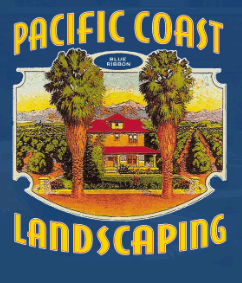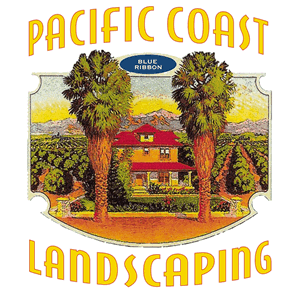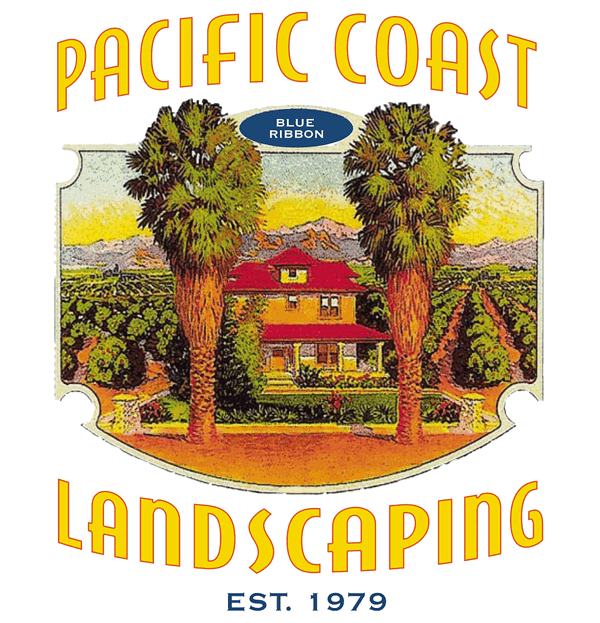Xeriscaping Design & Construction Near Me
We design and build beautiful low maintenance, drought tolerant landscapes
Xeriscaping, also known as drought-tolerant landscaping or here in Southern California "waterwise landscaping", is a landscaping approach that focuses on creating water-efficient, low-maintenance, and environmentally sustainable gardens or outdoor spaces. The term "xeriscaping" comes from the Greek word "xeros," meaning dry, and "scape," meaning scenery. The primary goal of xeriscaping is to conserve water, reduce maintenance, and create a landscape that is well adapted to local climate conditions, particularly in arid and semi-arid regions or in regions that face seasonal water restrictions.
Pacific Coast Landscaping is a landscaping contractor based out of Fullerton, California and serving North Orange County and the surrounding area. We specialize in the design and installation of low maintenance, drought-tolerant xeriscapes using a variety of natural stone, river rock, and native plantings to create the perfect balance of interest and color. Whether you're looking for a low maintenance landscape in your front yard to improve curb appeal or you'd like to xeriscape around your backyard pool or patio our team can help.
Xeriscaping offers a diverse range of popular design elements that create visually appealing, water-efficient, and low-maintenance landscapes. Native and drought-tolerant plants are essential components, providing color, texture, and interest while minimizing water usage. Groundcovers can be used as lawn alternatives, reducing the need for water-intensive grass lawns. Hardscape surfaces, such as gravel or decomposed granite pathways, contribute to both aesthetics and functionality, while permeable materials help with water absorption. Incorporating features like rain gardens and dry creek beds or swales can effectively manage stormwater runoff and create natural focal points in the landscape.
Other popular design elements include mulched planting beds, which help conserve soil moisture, and rock gardens that add visual interest with minimal maintenance. Retaining walls or terraces can be employed for erosion control and to create distinct planting areas. Rainwater harvesting systems, such as rain barrels or cisterns, further enhance water conservation efforts. In addition, xeriscapes can provide wildlife habitats with features like bird baths, nesting boxes, or pollinator gardens. Shade structures, such as pergolas or arbors, create comfortable outdoor seating areas and can be combined with artistic elements like sculptures, fountains, or decorative boulders to add a unique touch to the landscape.
Check Out Some Xeriscapes We've Built
We've designed and built some amazing xeriscapes in Fullerton, California.
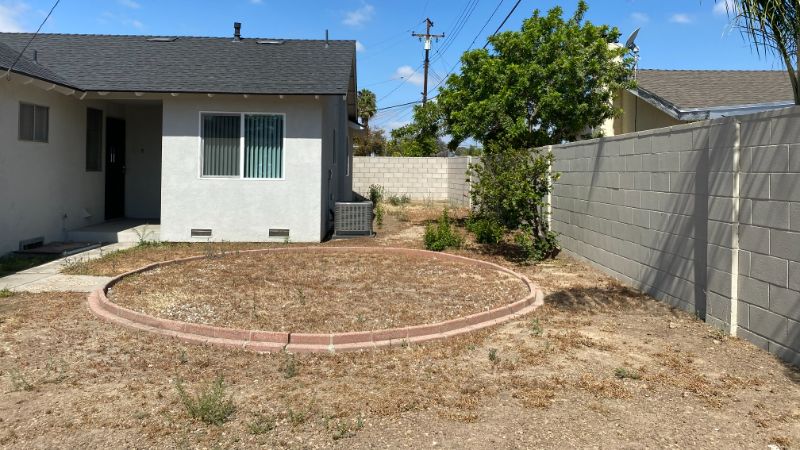
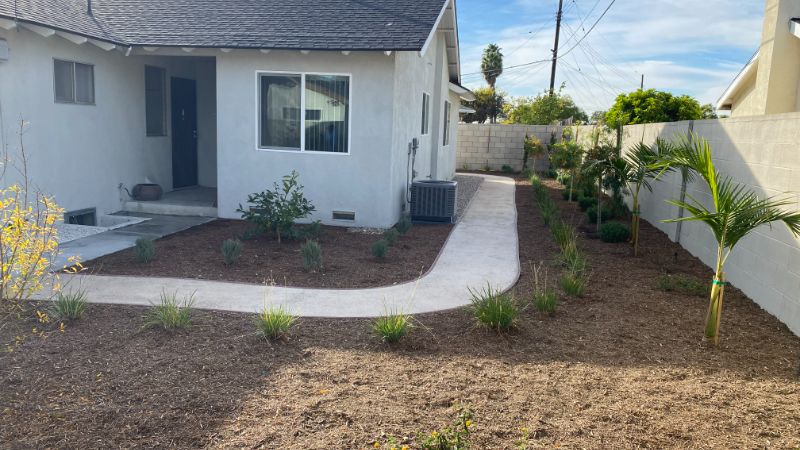
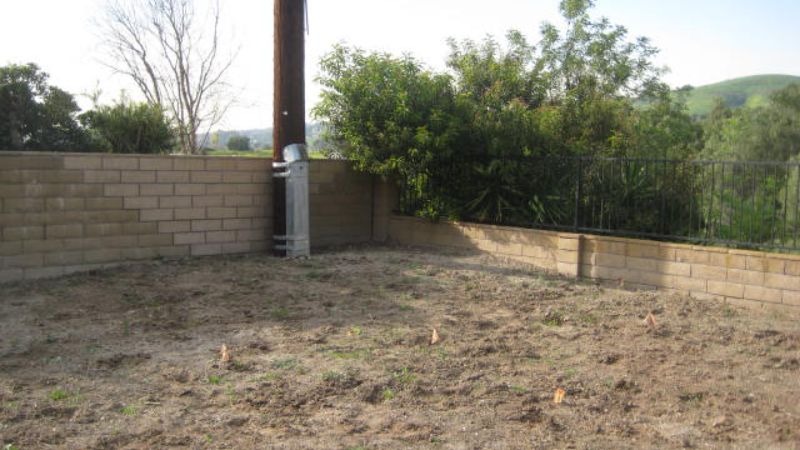

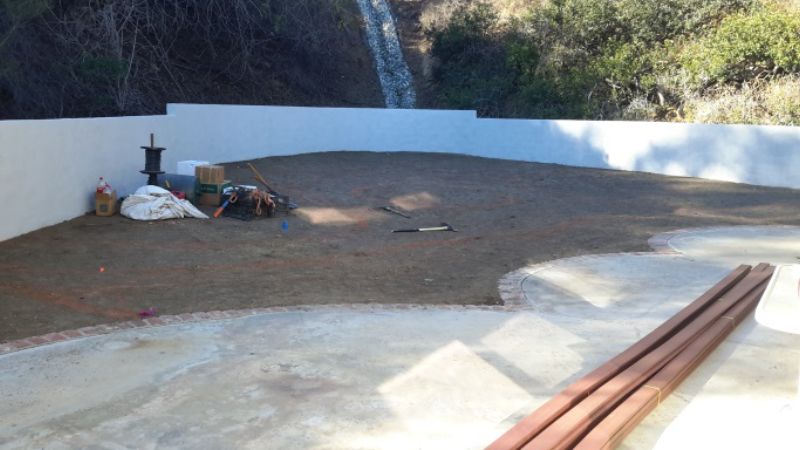
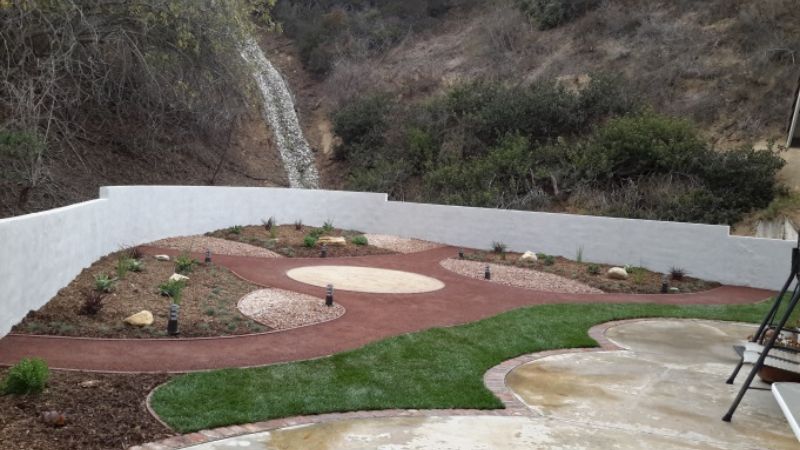





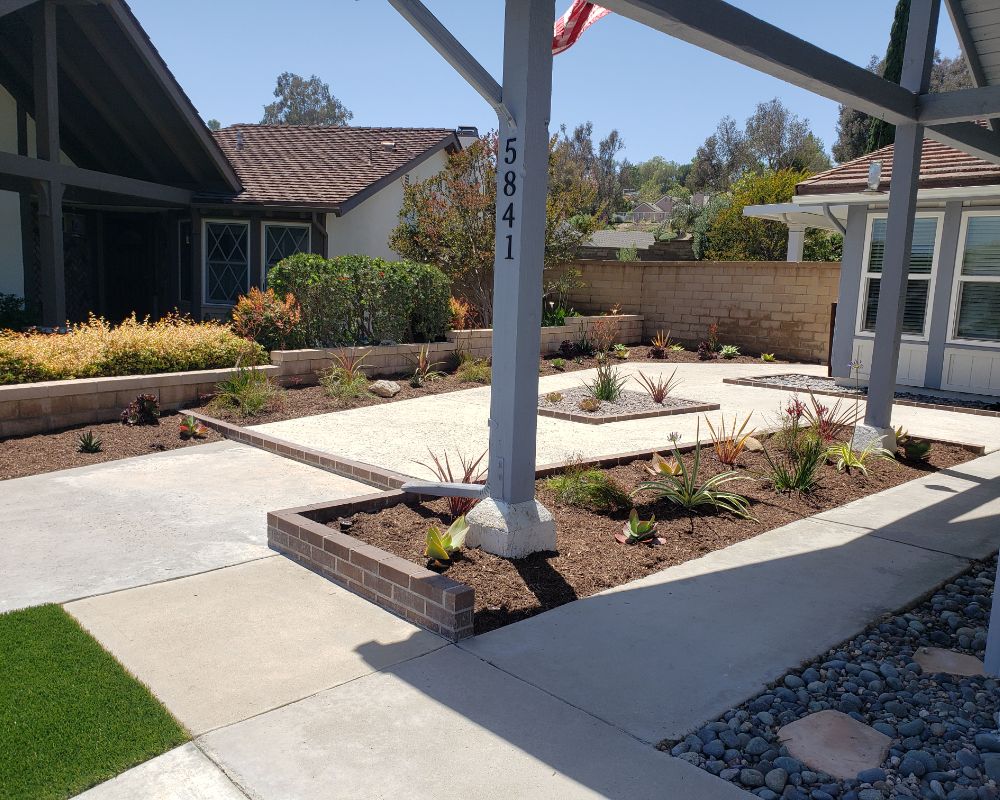
Xeriscaping incorporates several principles and techniques, including:
#1. Plant selection: We always choose native or drought-tolerant plants that require minimal supplemental watering once established. These plants are better adapted to our local climate and soil conditions and often require less maintenance than non-native species.
#2. Soil improvement: Drainage is important for a functional xeriscape. We usually amend the soil with organic matter, such as compost, to improve its water retention and nutrient availability. This helps plants establish strong root systems, making them more resistant to drought and other environmental stresses.
#3. Efficient irrigation: Implement efficient watering methods, such as drip irrigation and soaker hoses to target the root zones of plants and minimize water waste.
#4. Mulching: Apply a layer of organic or inorganic mulch around plants to conserve soil moisture, reduce evaporation, suppress weeds, and moderate soil temperature. Mulch materials can include wood chips, gravel, river rock, or crushed stone.
#5. Zoning: Ideally we try and group plants that share similar water, sunlight, and soil requirements together. This optimizes your irrigation system efficiency and reduces water waste. The less water a xeriscape requires to remain healthy, the better.
#6. Lawn reduction: Grass takes large amounts of water to stay healthy. The goal of a well-designed xeriscape is to minimize or replace traditional grass lawns with drought-tolerant ornamental grasses, groundcovers, or hardscape elements, such as patios, walkways, or gravel paths. This reduces the need for frequent watering, mowing, and fertilizing.
#7. Maintenance: The entire point of a xeriscape is to reduce water consumption and maintenance requirements. However, you'll still need to regularly prune, weed, and inspect your landscape to maintain its health and appearance. Proper maintenance can also help prevent pests, diseases, and ensure the longevity of your drought tolerant plants.
Our Xeriscape Designs Can Include
The only limit to a beautiful xeriscape is your imagination and your budget
Does xeriscaping mean I can only use cacti and succulents in my landscape?
No, xeriscaping involves using a variety of native and drought-tolerant plants, not just cacti and succulents. There are many different types of plants, including ornamental grasses, shrubs, perennials, and trees, that are well-suited for xeriscaping.
Will xeriscaping make my garden look dry and unattractive?
Xeriscaping does not have to result in a dry, barren-looking landscape. With careful plant selection and design, you can create a lush, colorful, and visually appealing garden that is also water-efficient and low-maintenance.
Can I still have a lawn with xeriscaping?
While traditional grass lawns often require significant water and maintenance, you can incorporate drought-tolerant grass species or groundcovers into your xeriscape to create a lawn-like area that requires less water and care. Artificial turf is also an option that is available too if you love the look of natural grass.
Is xeriscaping only suitable for arid climates?
Although xeriscaping is primarily associated with arid and semi-arid regions, its principles can be adapted to virtually any climate. The primary goal is to create a water-efficient and sustainable landscape, which can benefit any garden or outdoor space, regardless of climate. It is particular useful in areas that experience seasonal water restrictions.
How much water can I save by implementing xeriscaping?
The amount of water you can save through xeriscaping depends on factors like your current landscape, plant choices, and irrigation methods. However, xeriscaping can significantly reduce outdoor water usage, with some estimates suggesting water savings of up to 50% or more compared to traditional landscaping.
Does xeriscaping require more maintenance than traditional landscaping?
Xeriscaping typically requires less maintenance than traditional landscaping, as it focuses on using native and drought-tolerant plants that are adapted to local conditions. These plants often require less watering, fertilizing, and pruning compared to non-native species. So in general a xeriscape isn't something you'll need to rigorously maintain.
